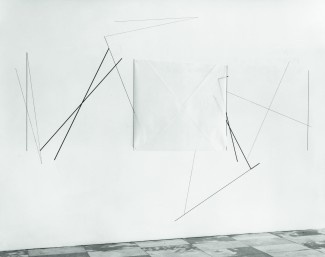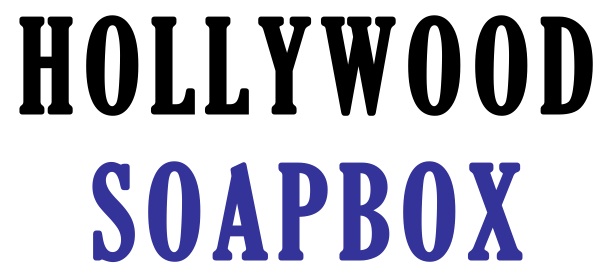Dorothea Rockburne show at MoMA displays ‘Drawing Which Makes Itself’

NEW YORK — Dorothea Rockburne is an artist of mathematical precision, a woman whose seemingly simple paintings and folded-vellum masterpieces beg for closer scrutiny. In her show at the Museum of Modern Art, spectators have the chance to witness her “Drawing Which Makes Itself” exhibition from the 1970s and begin to understand her overall artistic impact in the last few decades.
Oddly enough, many people may walk right past her first two pieces. Hanging right outside the entrance, within earshot of Isaac Julien’s “Ten Thousand Waves” presentation, are two colorful paintings, provocative introductions to the overall exhibition. One painting, hanging high on the wall, features a series of circles on top of one another, almost like different shades of the sun and moon. They are tied together by drips of paint, which somehow complete the circle shape, adding order and definition. The accompanying painting pulsates with red and features more drips of the paintbrush. Rockburne almost seems to cover the chaos of dripping paint with the safety of understandable shapes; when seen in their current layered state, there’s a three-dimensionality that is achieved.
Inside the exhibition, viewers can see a series of important pieces, all tied to mathematics and many tied to the golden section, a principle tied to ratios in nature.
I was struck by the “Locus” series, which features large white squares, folded and creased along a series of edges, again giving depth to the pieces of work. If visitors look close enough there’s also a varnish quality (thanks to aquatint) to the uppermost folded sections.
“Scalar” may be the highlight of the show. Using chipboard and crude oil (because it was cheaper than paint), Rockburne is able to create a series of panels that have an eerie, almost washed out texture. They are situated in a way that seems city-like, as if this were some apocalyptic skyline. One piece in “Scalar” is scrunched together and juts out of the wall, again adding wonderful depth to material often relegated as solely flat.
Another section includes a series of carbon paper cutouts that grace both the walls and floor of the exhibition space. They are joined by a network of lines that seem to cut the carbon along different angles.
“Guardian Angel, II” is the most colorful and perhaps the most beautiful. The watercolor-on-vellum work from 1982 uses the golden section, employing the mathematical principle to convey meaning through an assortment of folds.
“Neighborhood” receives a lot of prominence. The name of the piece asks the viewer to consider this folded white paper and series of colored-pencil lines as offering an image of cacophony, perhaps variety and diversity. It’s the most confounding of the pieces in “Drawing Which Makes Itself,” and that’s because of its understatement. The white paper and white wall almost bleed into each other, leaving only the lines and their focus on angles and intersections.
There may be some heady mathematics going on, but the joys of the exhibition can be a simple comfort to the eyes — even if that comfort is the result of careful, computational thought.
By John Soltes / Publisher / John@HollywoodSoapbox.com
-
Click here for more information.

